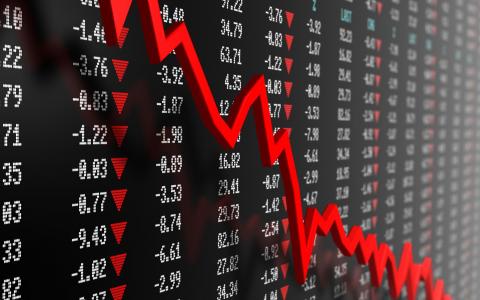
(Marketwatch) Stock investors should heed the warning emanating from the bond market, says at least one hedge-fund manager, as the yield curve staged a stunning inversion Friday.
“I think people are going to be surprised where the S&P 500 is trading at the end of the year. We’re going at least for a 40% decline from the S&P’s top,” Otavio Costa, a macro analyst at Crescat Capital, a hedge fund that oversees $52 million, told MarketWatch in an interview.
The analyst of the investment firm, says the inversion of the yield curve, where short-dated yields rise above their longer-dated peers, signals an ignominious end to a 10-year bull run for the S&P 500 index, which bottomed in March of 2009 but has mounted a record-long rally, by some measures, since that point.
In particular, Costa said the growing number of inversions in yield spreads across Treasury maturities suggested a bear-market for equities was at hand, in the face of a darkening global growth picture.
Costa’s comments come as the 10-year Treasury note yield tumbled 10 basis points to 2.439%, while the 3-month T-bill was down a single basis point to 2.462%, leaving the spread between the two maturities at around negative 3 basis points.
An inversion of this spread — the most closely watched by economists — has preceded every recession since 1960, though the timing between the two events can vary, according to the New York Fed. Bond prices move inversely to yields.
The inversion is the first such since 2007, just before the financial crisis that unfolded, reaching a crescendo in the fall of 2008. Yield curves invert because investors worry about future economic growth, which can stoke demand for safe, long-term Treasurys, while pushing down long-term rates. Up until January, the Federal Reserve had been lifting interest rates, nine times since December of 2015, which can have the effect of pushing down shorter-term rates, which are the most sensitive to central-bank rate increases, higher.
The T-bill and 10-year’s inversion has rippled through equity markets, with the S&P 500 and the Dow Jones Industrial Average on track to finish lower by more than 1% on Friday. Both equity benchmarks were down more than 2% from their recent peak on Thursday, FactSet data show.
Costa, a 29-year -old Brazilian native, who has been featured on Bloomberg News, says he is bearish on U.S. stocks and bullish on gold, or what he dubbed the “macro trade of the century,” with the expectation that investors would rush into havens as panic sets in and investors discard assets perceived as risky, like stocks, in favor of those viewed as havens, like gold.
“I believe the second leg of the bear market is what’s happening today,” said Costa, who argued Friday’s slump in stocks may be a continuation of the December selloff.
Costa says investors shouldn’t focus on any one inversion, but rather Crescat looks at the total percentage of inversions across U.S. yield spreads, based off maturities as extended as the 30-year bond to something as short as the overnight fed-funds rate. In the chart below, this percentage of curve inversions jumped to 60% this week from around zero in early 2018.
By measuring the number of inversions across instead of a single spread, the broader gauge would be less affected by individual idiosyncrasies that could muddy the economic signal of the bond-market recession indicator.
Costa concedes the Fed’s swift actions on March meeting could deflect concerns around excessive monetary tightening, in theory, buying the U.S. expansion more time.
On Wednesday, the central bank’s outlook for future rate increases projected zero increases for 2019 from two rate increases, as the Fed reacts to tightening financial conditions that cropped up late 2018 and economic weakness setting in outside of the U.S.
Denver-based Crescat, run by Stanford University alum Kevin Smith, posted a gain of 40.5%, ranking it as the best-performing macro hedge fund in 2018, according to data firm BarclayHedge. This strong run, however, came on the back of a 23% loss in 2017, a banner year for international stock markets.
The contrarian investment firm has been making a number of bets that weakness in China will ripple throughout the rest of the world.



